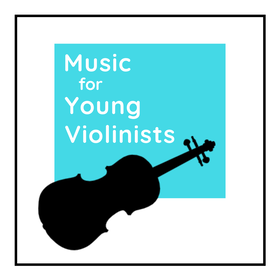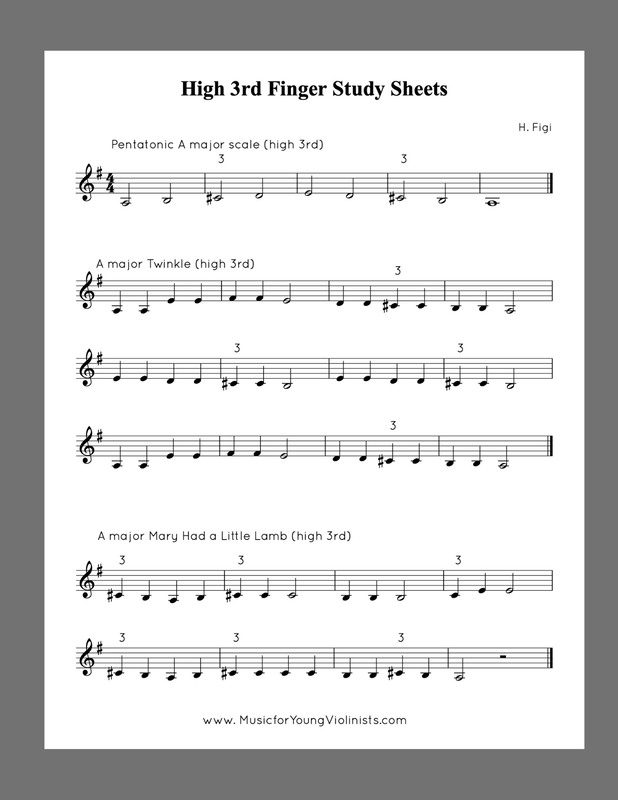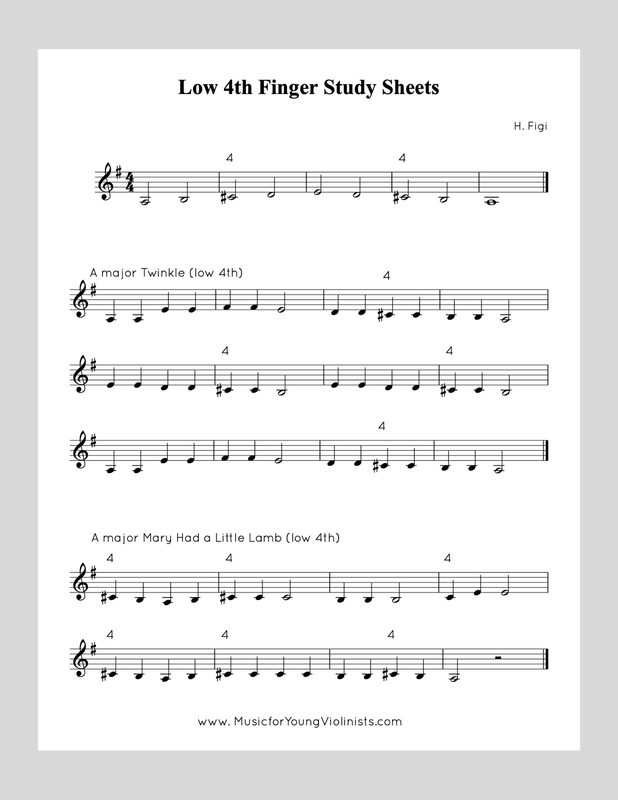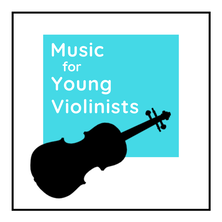|
Eeek! High 3rd Fingers (or Low 4th Fingers) - New FREEBIEs The time has come, and a beginning violinist has just encountered a piece with a new geographical location for the 3rd finger - what do we do? First of all, congratulations! This is so exciting and takes a little support, but soon you will feel comfortable with this new technique and thrilled to play this new tune that has enticed you. Next, we want to take the old and add the new. What does this mean? Keep scrolling to learn.
Whether you are a student or a teacher, it is really important to implement this concept of using an existing aural template (or physical technique) and augmenting it with the new technique to make learning natural. While it will still be challenging, we can avoid defeat by working like this. My student recently shared a super neat piece she wants to learn - it's in the key of G Major (1 sharp, a very standard key for us violinists), with G#s and D#s (requiring either high 3rds or low 4ths) all over the place - WOW, this is taking it to a new level! The free PDF downloads above will help you tackle a situation like this. We will use your existing knowledge and aural template of major keys, beginning scales and easy tunes. It seems like a lot with 6 pages in total, but simplicity will emerge after you peek at it. It should all sound familiar - these are simplified 5-note major scales and easy pieces Twinkle & Mary Had a Little Lamb, but with new, fancy, sophisticated high 3rds (and then the same music but with using low 4ths). "Hey, wait a second. I need some clarification. Why is this all in the key signature of G major?" Great question; these study sheets are all with only one sharp because this is often what we encounter with our actual sheet music when we get new repertoire with accidentals. "What's an accidental? Sounds like the word accident, which is not what I am going for in my music." Accidental is a term for a note (aka pitch) that is outside the key signature. For example, if we have a piece in the key of C major (which has no inherent sharps or flats), a G# would be an accidental for this key. The world of music making, especially violin playing, is full of misnomers, and I have written about 3 common ones here (and the comments share more food for thought). How to use these study guides? Some students must use the "guitar position" (sitting with the violin on the lap) and pluck the exercises before doing as written with the bow. This is especially important for violinists like me and prone to excess tension in the left hand or violinists who struggle with proper left-hand technique due to recently sizing up to a new instrument or where they are in their development. There is inherent repetition within these sheets; some students will need to do all the exercises daily for a month, and some will be able to grasp the concept by just utilizing one portion. We are all unique, and these guides can be tailored to where a violinist is at in their development. Catch a mistake? To error is human; I always double-check my work, sleep on it and then check it again, but from time to time, I make a mistake. Gold stars to anyone who catches a mistake and sends me a friendly email to fix it. This project is a labor of love, and your help is appreciated! Also, please reach out in the comments below to share your innovative ideas for approaching this issue with your teaching and practicing.
0 Comments
|
Categories
All
Archives
February 2024
AuthorHi! It's me, Heather. I absolutely love working on the Music for Young Violinists project and all the many facets: blogging, website, music, teaching materials, freebies, videos, newsletter and giveaway contests. The best part is connecting with you so feel free to drop me a line. You can learn more about me on the "ABOUT" page. Thanks! |
||||||||||||||



 RSS Feed
RSS Feed
